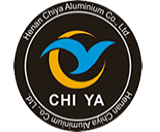Henan chiya Aluminum Co., Ltd
telephone:400-0374-808
fax:0374一6668192
email:605240913@qq.com
The url:enhnchiya.mycn86.cn
Website: en.hnchiya.com
Address: dazhou industrial zone, changge city, henan province

National service telephone
Welcome to the website of Henan chiya Aluminum Co., Ltd!
|
|
Henan chiya Aluminum Co., Ltd telephone:400-0374-808
fax:0374一6668192
email:605240913@qq.com
The url:enhnchiya.mycn86.cn
Website: en.hnchiya.com
Address: dazhou industrial zone, changge city, henan province |
|
Aluminum alloy casting, six technical propertiesTime:2019-05-22 1. The contractility Shrinkage is one of the main characteristics of cast aluminum alloy. Generally speaking, the alloy from liquid pouring to solidification, until cold to room temperature, is divided into three stages, respectively liquid shrinkage, solidification shrinkage and solid shrinkage. The shrinkage of the alloy has a decisive influence on the casting quality, which affects the size of shrinkage cavity, the generation of stress, the formation of crack and the change of size. Usually, casting shrinkage is divided into bulk shrinkage and linear shrinkage. In actual production, linear shrinkage is generally used to measure the shrinkage of alloy. The shrinkage size, usually expressed as a percentage, is called shrinkage. (1) body shrinkage body shrinkage includes liquid shrinkage and solidification shrinkage. From pouring to solidification, there will be macroscopic or microscopic shrinkage in the final solidification place of casting alloy liquid. Such macroscopic shrinkage caused by shrinkage is visible to the naked eye, and can be divided into concentrated shrinkage and dispersed shrinkage. Concentrated shrinkage pores are large and concentrated, and are distributed on the top of the casting or at the hot joints with a thick section. The morphology of dispersed shrinkage pores is dispersed and fine, most of them are distributed in the center and hot spot of casting. Microshrinkage is hard to be seen by naked eye, and most of them are under grain boundary or between dendrites. Shrinkage cavity and porosity are one of the main defects of castings. Found in production, casting aluminium alloy solidification range is smaller, the formation of concentrated shrinkage, solidification range is wide, the more easy dispersion shrinkage cavity formation, therefore, in the design must conform to the principle of directional solidification casting aluminum alloy, the casting liquid is to the body during the solidification shrinkage should be alloy liquid supplement, is loose focus on the outside of the castings and shrinkage cavity at the mouth. For aluminum alloy castings prone to dispersion and porosity, more risers are set than concentrated shrinkage holes, and chillers are set at the place prone to porosity to increase local cooling rate and make them solidify simultaneously or quickly. (2) the shrinkage of the line will directly affect the quality of the casting. The larger the linear shrinkage, the greater the tendency of crack and stress. After cooling, the casting size and shape change more. For different cast aluminum alloys, there are different shrinkage rates, even if the same alloy, casting different, shrinkage rates are different, in the same casting, the length, width, height of the shrinkage is also different. It depends on the circumstances. 2. Casting stress Casting stress includes thermal stress, phase transition stress and shrinkage stress. The causes of various stresses are not the same. (1) thermal stress thermal stress is caused by uneven thickness and inconsistent cooling at the intersection of different geometric shapes of castings. Compressive stress is formed at the thin wall, resulting in residual stress in the casting. (2) phase change stress phase change stress is due to the phase change during the cooling process after solidification of some diecasted aluminum alloys, which brings about the change of volume size. This is mainly due to the uneven thickness of the aluminum casting wall and the phase transition in different parts at different times. (3) shrinkage stress aluminum casting shrinkage by the mold, the core of the block caused by tensile stress. This stress is temporary, the aluminum casting will automatically disappear when the box is opened. However, if the time of unpacking is not appropriate, the hot crack is often caused, especially for the aluminum alloy in metal casting. Residual stress in diecasted aluminum alloy reduces the mechanical properties of the alloy and affects the machining accuracy of the casting. Residual stress in aluminum castings can be eliminated by annealing. Because the alloy has good thermal conductivity and no phase transition during the cooling process, the residual stress of aluminum castings is generally small as long as the casting structure design is reasonable. |

email:605240913@qq.com


url:enhnchiya.mycn86.cn
Address: dazhou industrial zone, changge city, henan province
telephone:400-0374-808

National Advisory Hotline:
400-0374-808

Links: